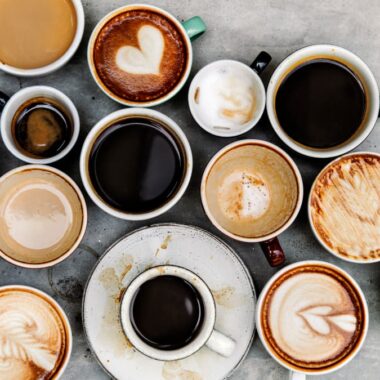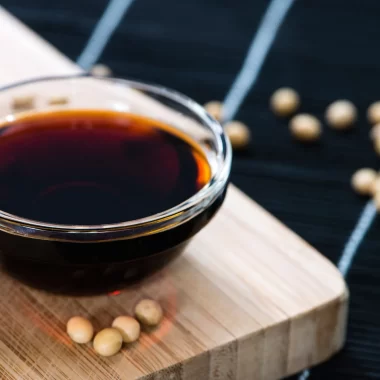Coffee is the largest source of caffeine in the human diet. You can get about 95 mg of caffeine from an average cup of coffee. However, this content varies between different coffee drinks and can range from almost zero to more than 500 mg of caffeine. So how much caffeine is in Vietnamese coffee? This article by Tasty Touch will provide detailed instructions on Vietnamese coffee caffeine and related factors. Check it out!
What factors affect the amount of caffeine?
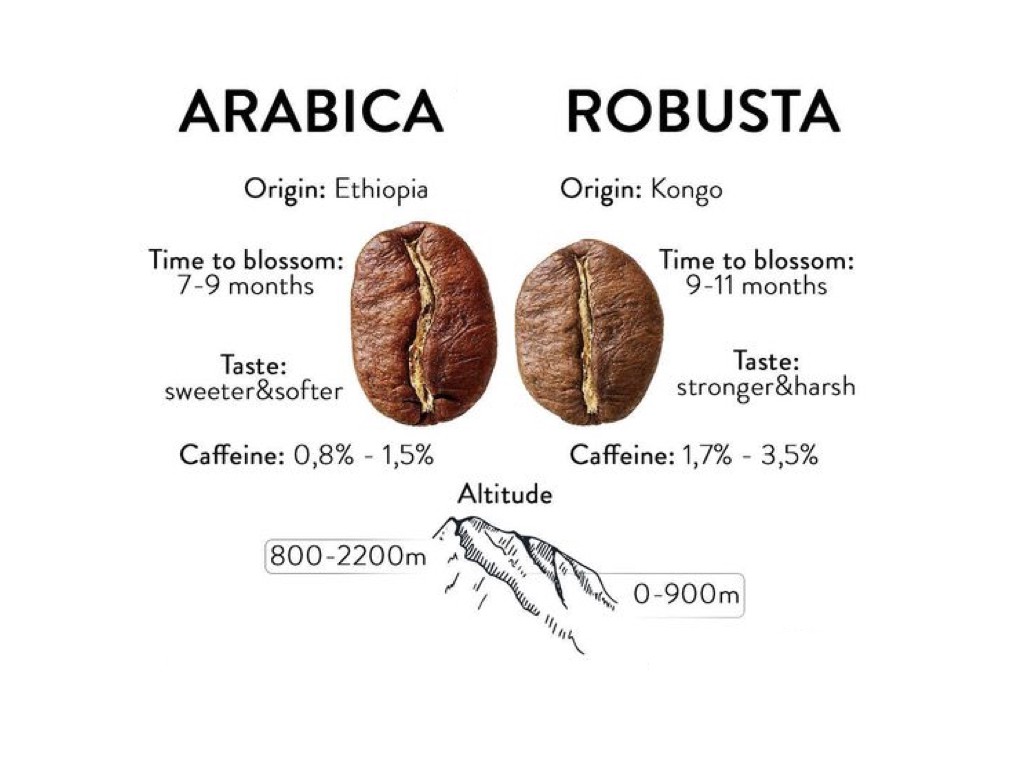
There are many factors that affect the amount of caffeine in one cup of coffee versus another. The variety of seeds, growing place, roasting method, and preparation method… all affect the caffeine content in a cup of coffee.
Coffee beans
There are two basic types of coffee beans, Arabica and Robusta – which is the main ingredients of most Vietnamese coffee. Arabica is a higher-quality bean commonly used by coffee connoisseurs. According to Coffee Reach, Arabica accounts for 75% of world consumption. Robusta beans have a higher caffeine content than Arabica beans.
Coffee bean roasting process
Although Robusta beans have a higher caffeine content, roasting and preparation techniques can affect the caffeine content of the coffee. In terms of caffeine content, many people mistakenly believe that if the roast is dark, the amount of caffeine will be more and vice versa. Like alcohol, when it is “cooked”, the caffeine will be “volatile”. Therefore, longer roasting will result in less caffeine content in the coffee. High-quality light roast Arabica, properly handled and prepared, yields high levels of caffeine.
Preparing process
Factors that can affect the caffeine content of a cup of coffee include how fine the beans are ground before brewing, and the method and time of preparation. According to the Coffee Facts website, the drip method, which uses finely ground coffee, produces the most caffeine because hot water is in contact with the coffee powder for a long time.
A 5-oz (~148ml) cup contains between 115 and 175mg of caffeine. Filtered coffee will give you 80-135mg of caffeine per 5-oz (148ml) cup. One shot of espresso will give you 80-100mg of caffeine. Instant coffee in general has the least caffeine content, about 65mg per cup.
Consider
There are many factors that affect the caffeine content of your coffee. Obviously, a larger cup capacity means more coffee and therefore more caffeine. A 16-oz (~473ml) cup of coffee will probably be 3 times larger than the cup of coffee you usually drink at home. And when you choose different beans and different roasting techniques at different coffee shops, the caffeine content will also vary. Despite the above factors, the fluctuation per 100mg of caffeine in 1 16-oz cup is significant.
How much caffeine in Vietnamese coffee?

Caffeine is the active ingredient in coffee, which is the most common psychostimulant in the world.
How much caffeine is in a Vietnamese coffee? The caffeine content of a cup of coffee varies widely, ranging from 50 to 400 mg per cup. A small cup of home-brewed coffee can contain 50 mg, while a large 473 ml cup can contain more than 300 mg.
As a rule of thumb, you can assume an average 237ml cup of coffee contains about 100mg of caffeine. Some sources claim that 400 mg of caffeine is equivalent to 4 cups of coffee. This is a safe level for most healthy adults.
Below we will discuss how much caffeine is in each type of common Vietnamese coffee.
Black coffee (ice/hot)
This is the simplest and most “rustic” way to enjoy coffee. Black coffee is made by pouring finely ground coffee grounds into a filter, such as a filter, and pouring hot water in. One cup of black coffee (about 240ml) contains about 70-140 mg of caffeine, the average is about 95 mg.
Milk coffee (ice/hot)
Milk coffee or brown coffee is black coffee mixed with condensed milk. This type of coffee is very popular because it has a sweet taste of milk and is less harsh than black coffee. There are also many other beverages made by adding milk or dairy products to coffee, such as latte, cappuccino, macchiato, and americano. Because milk doesn’t contain caffeine, these drinks have the same amount of caffeine as black coffee.
Instant coffee
Instant coffee is made from brewed coffee, then goes through a multi-step process such as concentration and drying. Instant coffee products are often powdered, just pour hot water and stir well to drink. Instant coffee usually contains less caffeine than ground coffee. One cup contains from 30 to about 90 mg of caffeine.
Decaffeinated coffee
Decaffeinated coffee is coffee made by washing the beans with a solvent to remove the caffeine and then roasting it like regular coffee. Despite its name, decaffeinated coffee is not completely caffeine-free. The amount of caffeine in this coffee ranges from 0 – 7 mg per cup, with an average of 3 mg – much less than regular coffee.
However, some products contain more caffeine, depending on the type of coffee bean used, the method of decaffeination, and the cup volume.
Machine-brewed coffee (Espresso)
Espresso coffee is coffee brewed by a machine, using hot water compressed by high pressure through a layer of finely ground coffee powder. This type of coffee was imported from European countries and gradually popularized in many modern coffee shops in Vietnam.
Although espresso has more caffeine per volume than regular coffee, it usually contains less per cup, as espresso cups tend to be small. A cup of espresso is usually about 30-50 ml and contains about 63 mg of caffeine. Therefore, double a cup of espresso contains about 125 mg of caffeine.
Drinks from espresso
Many popular coffee drinks have an espresso base but are mixed with different types and amounts of milk. These include lattes, cappuccinos, macchiatos and americanos. These kinds of coffee are increasingly becoming popular in Vietnam.
Since milk contains no added caffeine, these drinks contain the same amount of caffeine as espresso. An average small cup contains about 63 mg of caffeine and a double large cup contains about 125 mg.
Summary: The average amount of caffeine in a 240ml cup of black coffee or milk coffee is 95 mg. Instant coffee contains about 30-90 mg of caffeine. Decaffeinated coffee has a lot less caffeine, only about 3 mg (on average).
Why is Vietnamese coffee so strong?
Comparing Vietnamese coffee to American coffee, there are significant differences. In essence, the high caffeine level, the distinctive brewing method, and the dark roast are what make Vietnamese coffee so potent. It is not only brewed differently, but it also has a taste of its own. Vietnamese coffee is wonderful since it doesn’t need refrigeration and may be drunk hot or cold without the usual sweets.
A drip filter constructed of stainless steel is used to make traditional Vietnamese coffee. You fill the filter with the proper quantity of grinds and set it over the cup or glass you’ll be drinking from. Pour some hot water into the filter to help the grounds grow, then let it bloom for a moment. To make a more delicious brew, compress the coffee in the filter before adding the remaining water.
Vietnamese coffee often has a very strong and bitter taste profile because of its deeper roast. In place of regular milk, cream, and sugar, condensed milk is frequently utilized to lighten and sweeten coffee.
What happens if you consume too much caffeine?
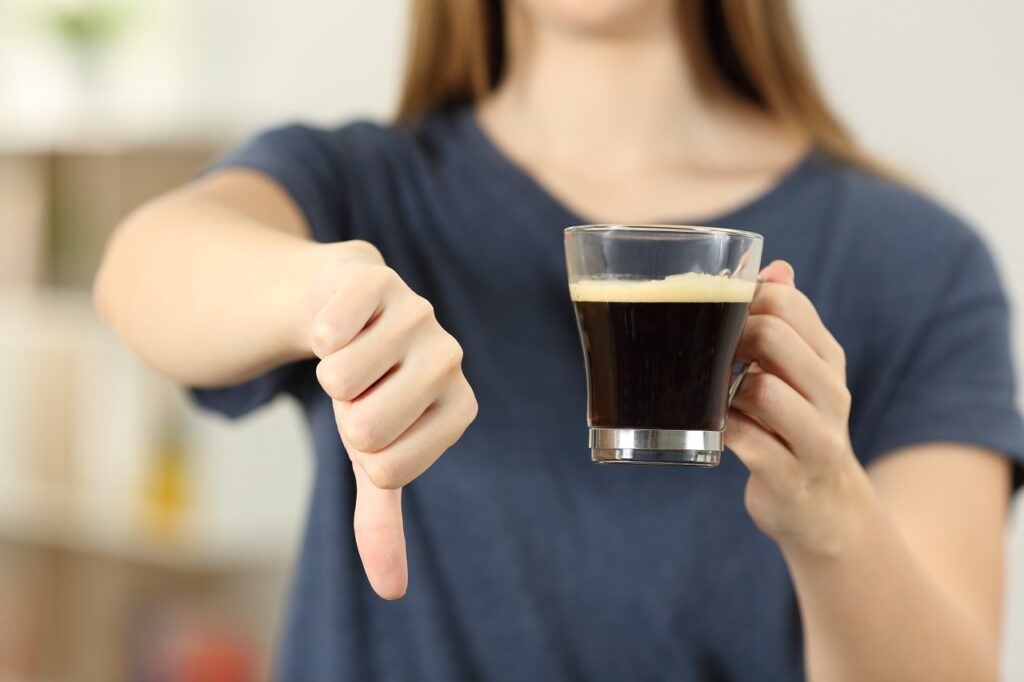
Here are some side effects of too much caffeine:
Caffeine causes insomnia
Caffeine can keep people awake, but too much caffeine can make it hard to get enough sleep.
Studies have found that higher caffeine intake seems to increase the time it takes to fall asleep. It may also reduce total sleep time, especially in the elderly. In contrast, low or moderate caffeine intake did not appear to significantly affect sleep in people whose normal sleep was considered “good night’s sleep”.
Caffeine causes digestive problems
Although small to moderate amounts of coffee can help improve bowel movements. The laxative effect of coffee is thought to be due to the release of gastrin, a hormone that the stomach produces to speed up activity in the colon. Caffeine itself also seems to stimulate and increase bowel movements, and contractions to move food through the digestive tract.
Some research also shows that caffeinated beverages, including coffee, may worsen gastroesophageal reflux disease (GERD) in some people.
Caffeine causes addiction
Despite all the health benefits of caffeine, there’s no denying that it can become a habit for many people.
A detailed review found that although caffeine activates certain brain chemicals similar to how cocaine and amphetamines do, it is not as addictive as the way these drugs do. However, it can lead to psychological or physical dependence, especially at high doses.
Research also shows that people who consume high doses of caffeine have strong caffeine cravings. Additionally, caffeine intake seems to play a role in dependence. While this compound doesn’t appear to be truly addictive, if you regularly drink a lot of coffee or other caffeinated beverages, chances are you’ll become dependent on its effects.
Caffeine causes high blood pressure
Overall, caffeine doesn’t seem to increase the risk of heart disease or stroke in most people. However, it has been shown to increase blood pressure in some studies due to its stimulating effects on the nervous system.
High caffeine intake has also been shown to increase exercise blood pressure in healthy individuals, as well as in those with mildly elevated blood pressure. So paying attention to the dose and duration of caffeine is important, especially if you already have high blood pressure.
Coffee and caffeine – How much is enough for a day?
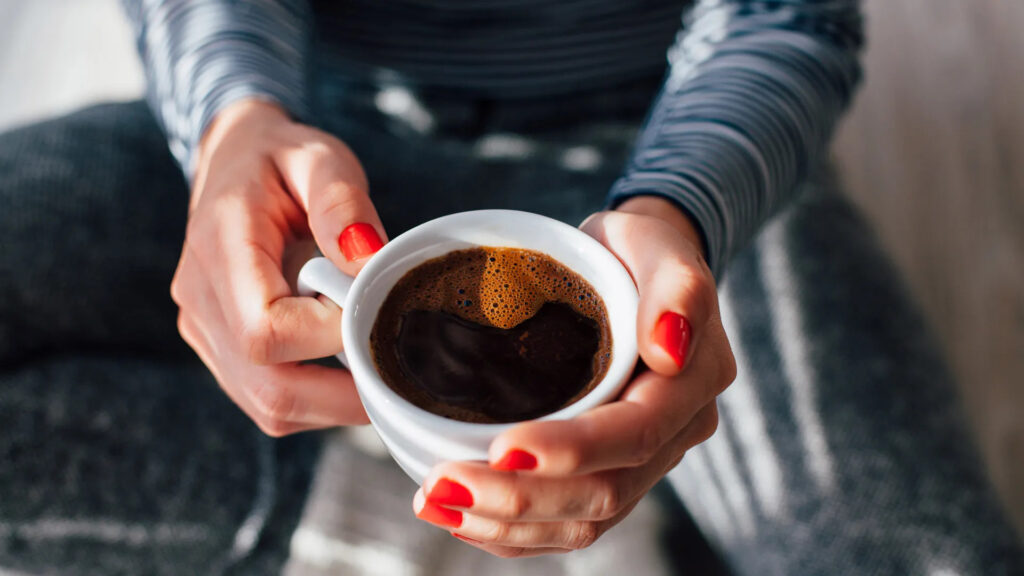
The most appropriate amount of coffee is from 200mg to less than 400mg of Caffeine a day. With age, the effects of caffeine increase. For adults, a normal body, an average day should absorb about 300mg of caffeine depending on the type, equivalent to 3-5 cups of coffee is best.
Normally, after drinking coffee, the body needs about 1 hour to absorb 20%, 3-7 hours to absorb 50%, and about 12 hours to absorb the full amount of caffeine. So for the best, we should separate the time to drink coffee during the day, each drink should be about 3 hours apart.
While 3 to 5 cups of coffee a day is fine for the average adult, it’s important deeply understand how your body feels in case you may be more sensitive to caffeine. If you drink too much caffeine, you may experience symptoms such as restlessness, nausea, headaches, or symptoms of anxiety.
Admittedly, depending on the body of each person, the amount of coffee enough for each day will vary, so even if you grind the coffee, make sure you only drink it at a reasonable level!
How much caffeine is in Vietnamese coffee? The answer is mentioned above. We hope this article on Vietnamese coffee caffeine can provide you with beneficial information for your diet.

